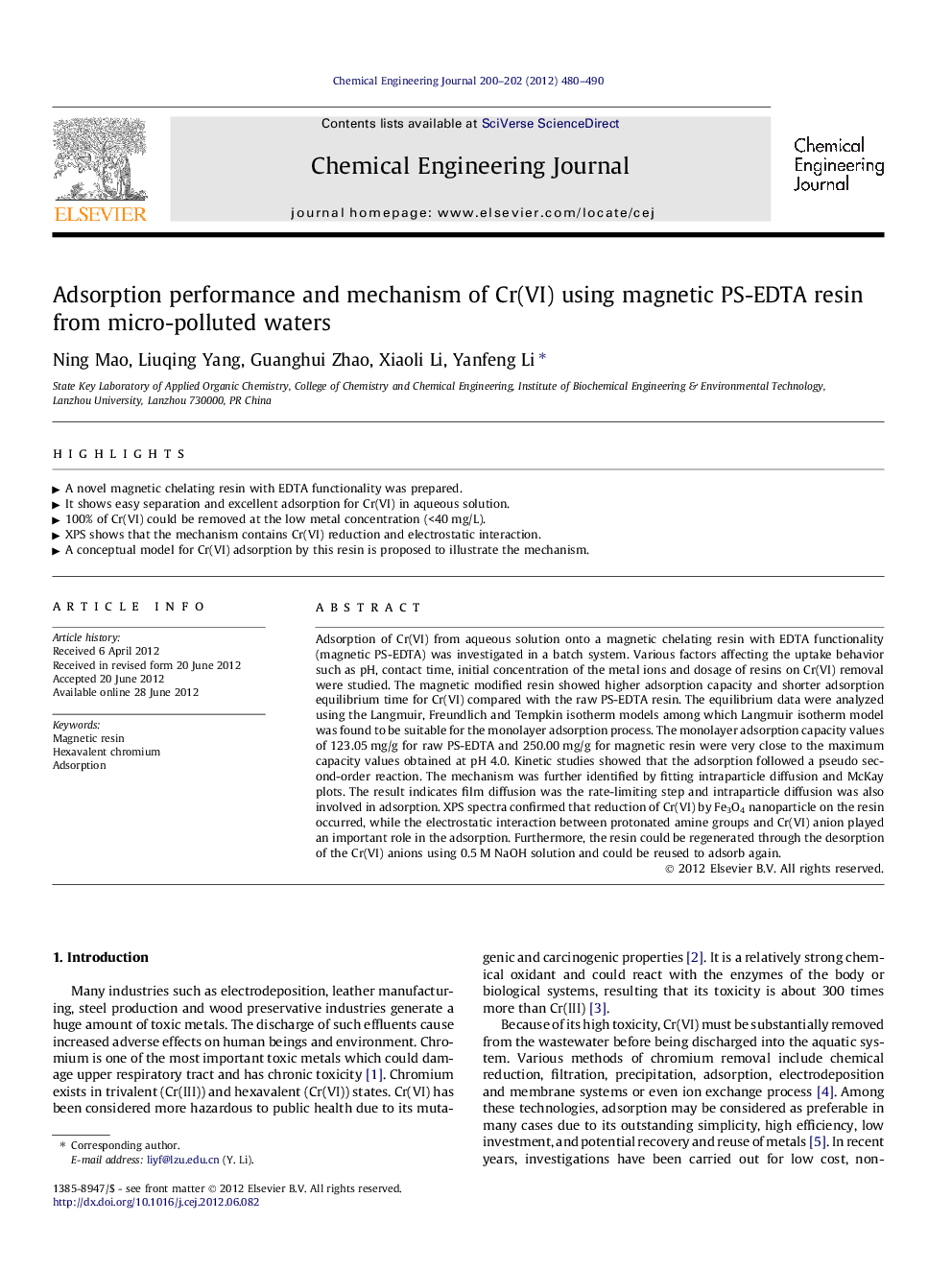| کد مقاله | کد نشریه | سال انتشار | مقاله انگلیسی | نسخه تمام متن |
|---|---|---|---|---|
| 149570 | 456434 | 2012 | 11 صفحه PDF | دانلود رایگان |

Adsorption of Cr(VI) from aqueous solution onto a magnetic chelating resin with EDTA functionality (magnetic PS-EDTA) was investigated in a batch system. Various factors affecting the uptake behavior such as pH, contact time, initial concentration of the metal ions and dosage of resins on Cr(VI) removal were studied. The magnetic modified resin showed higher adsorption capacity and shorter adsorption equilibrium time for Cr(VI) compared with the raw PS-EDTA resin. The equilibrium data were analyzed using the Langmuir, Freundlich and Tempkin isotherm models among which Langmuir isotherm model was found to be suitable for the monolayer adsorption process. The monolayer adsorption capacity values of 123.05 mg/g for raw PS-EDTA and 250.00 mg/g for magnetic resin were very close to the maximum capacity values obtained at pH 4.0. Kinetic studies showed that the adsorption followed a pseudo second-order reaction. The mechanism was further identified by fitting intraparticle diffusion and McKay plots. The result indicates film diffusion was the rate-limiting step and intraparticle diffusion was also involved in adsorption. XPS spectra confirmed that reduction of Cr(VI) by Fe3O4 nanoparticle on the resin occurred, while the electrostatic interaction between protonated amine groups and Cr(VI) anion played an important role in the adsorption. Furthermore, the resin could be regenerated through the desorption of the Cr(VI) anions using 0.5 M NaOH solution and could be reused to adsorb again.
► A novel magnetic chelating resin with EDTA functionality was prepared.
► It shows easy separation and excellent adsorption for Cr(VI) in aqueous solution.
► 100% of Cr(VI) could be removed at the low metal concentration (<40 mg/L).
► XPS shows that the mechanism contains Cr(VI) reduction and electrostatic interaction.
► A conceptual model for Cr(VI) adsorption by this resin is proposed to illustrate the mechanism.
Journal: Chemical Engineering Journal - Volumes 200–202, 15 August 2012, Pages 480–490